CDK11 negatively regulates Wnt/β-catenin signaling in the endosomal compartment by affecting microtubule stability
- PMID: 32587772
- PMCID: PMC7309457
- DOI: 10.20892/j.issn.2095-3941.2019.0229
CDK11 negatively regulates Wnt/β-catenin signaling in the endosomal compartment by affecting microtubule stability
Abstract
Objectives: Improper activation of Wnt/β-catenin signaling has been implicated in human diseases. Beyond the well-studied glycogen synthase kinase 3β (GSK3β) and casein kinase 1 (CK1), other kinases affecting Wnt/β-catenin signaling remain to be defined. Methods:To identify the kinases that modulate Wnt/β-catenin signaling, we applied a kinase small interfering RNA (siRNA) library screen approach. Luciferase assays, immunoblotting, and real-time polymerase chain reaction (PCR) were performed to confirm the regulation of the Wnt/β-catenin signaling pathway by cyclin-dependent kinase 11 (CDK11) and to investigate the underlying mechanism. Confocal immunofluorescence, coimmunoprecipitation (co-IP), and scratch wound assays were used to demonstrate colocalization, detect protein interactions, and explore the function of CDK11. Results: CDK11 was found to be a significant candidate kinase participating in the negative control of Wnt/β-catenin signaling. Down-regulation of CDK11 led to the accumulation of Wnt/β-catenin signaling receptor complexes, in a manner dependent on intact adenomatosis polyposis coli (APC) protein. Further analysis showed that CDK11 modulation of Wnt/β-catenin signaling engaged the endolysosomal machinery, and CDK11 knockdown enhanced the colocalization of Wnt/β-catenin signaling receptor complexes with early endosomes and decreased colocalization with lysosomes. Mechanistically, CDK11 was found to function in Wnt/β-catenin signaling by regulating microtubule stability. Depletion of CDK11 down-regulated acetyl-α-tubulin. Moreover, co-IP assays demonstrated that CDK11 interacts with the α-tubulin deacetylase SIRT2, whereas SIRT2 down-regulation in CDK11-depleted cells reversed the accumulation of Wnt/β-catenin signaling receptor complexes. CDK11 was found to suppress cell migration through altered Wnt/β-catenin signaling. Conclusions: CDK11 is a negative modulator of Wnt/β-catenin signaling that stabilizes microtubules, thus resulting in the dysregulation of receptor complex trafficking from early endosomes to lysosomes.
Keywords: CDK11; SIRT2; Wnt/β-catenin signaling; endosome; microtubule.
Copyright: © 2020, Cancer Biology & Medicine.
Figures
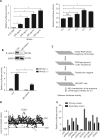
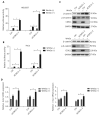
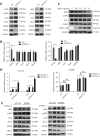
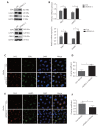
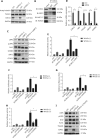
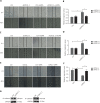

Similar articles
-
Wnt-beta-catenin pathway signals metastasis-associated tumor cell phenotypes in triple negative breast cancers.Oncotarget. 2016 Jul 12;7(28):43124-43149. doi: 10.18632/oncotarget.8988. Oncotarget. 2016. PMID: 27281609 Free PMC article.
-
SIRT2 interacts with β-catenin to inhibit Wnt signaling output in response to radiation-induced stress.Mol Cancer Res. 2014 Sep;12(9):1244-53. doi: 10.1158/1541-7786.MCR-14-0223-T. Epub 2014 May 27. Mol Cancer Res. 2014. PMID: 24866770 Free PMC article.
-
RNA-binding motif protein 5 negatively regulates the activity of Wnt/β-catenin signaling in cigarette smoke-induced alveolar epithelial injury.Oncol Rep. 2015 May;33(5):2438-44. doi: 10.3892/or.2015.3828. Epub 2015 Mar 3. Oncol Rep. 2015. PMID: 25738917
-
New steps in the Wnt/beta-catenin signal transduction pathway.Recent Prog Horm Res. 2000;55:225-36. Recent Prog Horm Res. 2000. PMID: 11036939 Review.
-
Dysregulation of Wnt/β-catenin signaling by protein kinases in hepatocellular carcinoma and its therapeutic application.Cancer Sci. 2021 May;112(5):1695-1706. doi: 10.1111/cas.14861. Epub 2021 Apr 6. Cancer Sci. 2021. PMID: 33605517 Free PMC article. Review.
Cited by
-
Effect of the Rho-Kinase/ROCK Signaling Pathway on Cytoskeleton Components.Genes (Basel). 2023 Jan 20;14(2):272. doi: 10.3390/genes14020272. Genes (Basel). 2023. PMID: 36833199 Free PMC article. Review.
-
Pantothenate Kinase 1 Inhibits the Progression of Hepatocellular Carcinoma by Negatively Regulating Wnt/β-catenin Signaling.Int J Biol Sci. 2022 Jan 24;18(4):1539-1554. doi: 10.7150/ijbs.67842. eCollection 2022. Int J Biol Sci. 2022. PMID: 35280671 Free PMC article.
-
Changes in microtubule stability in zebrafish (Danio rerio) embryos after glyphosate exposure.Heliyon. 2021 Jan 21;7(1):e06027. doi: 10.1016/j.heliyon.2021.e06027. eCollection 2021 Jan. Heliyon. 2021. PMID: 33532646 Free PMC article.
-
SIK2 maintains breast cancer stemness by phosphorylating LRP6 and activating Wnt/β-catenin signaling.Oncogene. 2022 Apr;41(16):2390-2403. doi: 10.1038/s41388-022-02259-0. Epub 2022 Mar 11. Oncogene. 2022. PMID: 35277657
-
Azoxymethane-induced carcinogenesis-like model of mouse intestine and mouse embryonic stem cell-derived intestinal organoids.Mol Biol Rep. 2024 Jun 1;51(1):704. doi: 10.1007/s11033-024-09660-w. Mol Biol Rep. 2024. PMID: 38824233
References
-
- Clevers H. Wnt/beta-catenin signaling in development and disease. Cell. 2006;127:469–80. - PubMed
-
- Polakis P. The many ways of Wnt in cancer. Curr Opin Genet Dev. 2007;17:45–51. - PubMed
-
- Anastas JN, Moon RT. Wnt signalling pathways as therapeutic targets in cancer. Nat Rev Cancer. 2013;13:11–26. - PubMed
-
- Li VS, Ng SS, Boersema PJ, Low TY, Karthaus WR, Gerlach JP, et al. Wnt signaling through inhibition of beta-catenin degradation in an intact Axin1 complex. Cell. 2012;149:1245–56. - PubMed
Publication types
MeSH terms
Substances
LinkOut - more resources
Full Text Sources
Molecular Biology Databases
Research Materials
